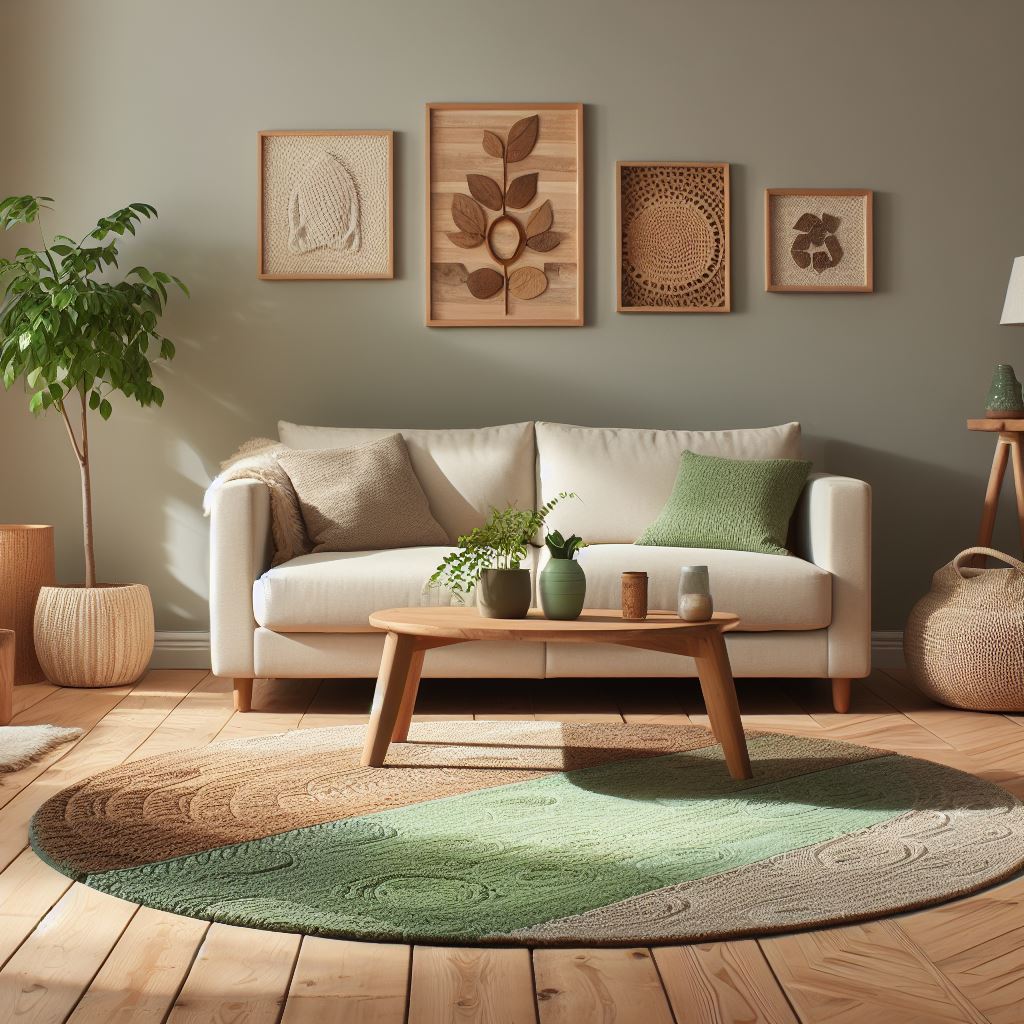Are you ready to transform your home into a sustainable sanctuary? Look no further. In this article, we will reveal the hottest home decor trends for 2024 that not only elevate your living space but also prioritize the well-being of our planet. From eco-friendly materials to nature-inspired designs, get ready to embrace a greener and more stylish future for your home. Say goodbye to conventional decor and say hello to a sustainable revolution! Let’s dive in and discover the exciting world of sustainable home decor trends for 2024.
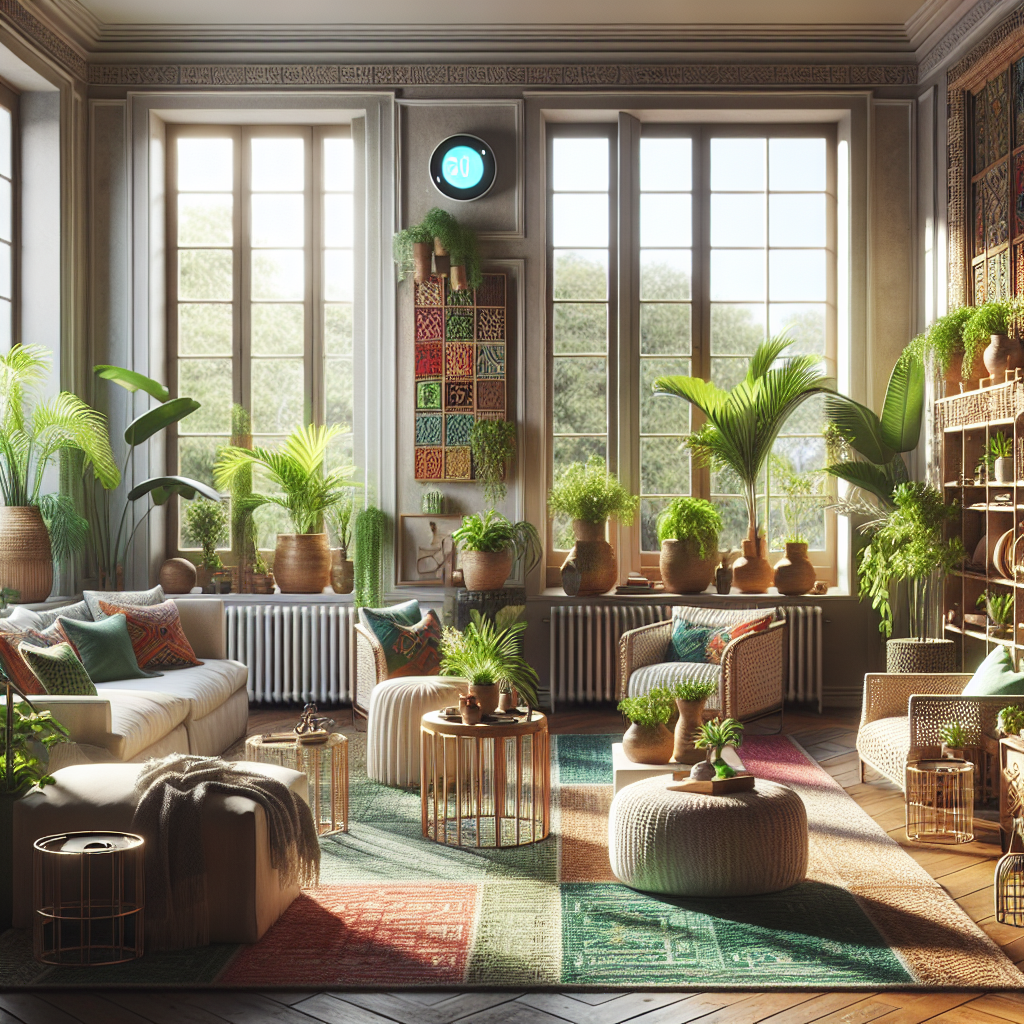
This post may contain affiliate links, which means if you make a purchase from any of these links, we do make a small commission at no cost to you.
1. Incorporation of Natural Materials
As we look towards the future, there is a growing trend towards incorporating natural materials into home decor. From wooden furniture and accents to natural fibers and fabrics, these elements bring a sense of warmth and connection to the outdoors into your living space.
1.1 Wooden furniture and accents
Wood is a versatile and timeless material that adds a touch of natural beauty to any room. In 2024, we can expect to see an increase in the use of wooden furniture and accents in sustainable home decor. From dining tables and chairs to coffee tables and bookshelves, there are endless options for incorporating wood into your home. Opt for furniture made from reclaimed or sustainably sourced wood to minimize environmental impact.
1.2 Natural fibers and fabrics
Natural fibers such as jute, bamboo, and hemp are gaining popularity as sustainable alternatives to synthetic materials. These fibers are not only eco-friendly but also add texture and depth to your decor. Look for rugs, pillows, and curtains made from these natural materials to create a cozy and sustainable ambiance in your home.
1.3 Stone and marble elements
Stone and marble elements bring a sense of elegance and sophistication to any space. In 2024, we can expect to see an increase in the use of stone and marble in sustainable home decor. From countertops and backsplashes to accent walls and decorative accessories, incorporating these natural materials adds a touch of luxury to your living space while being environmentally conscious. Opt for reclaimed or locally sourced stones and marbles to minimize the environmental footprint.
2. Emphasis on Recycling and Upcycling
To reduce waste and promote sustainability, recycling, and upcycling have become a key focus in home decor trends for 2024. By repurposing furniture and accessories, engaging in DIY projects using recycled materials, and incorporating vintage and antique pieces, you can create a unique and eco-friendly living space.
2.1 Repurposed furniture and accessories
Instead of buying new furniture, consider repurposing old pieces to give them a new lease on life. Upcycling furniture not only helps reduce waste but also allows you to express your creativity and create one-of-a-kind pieces for your home. With a fresh coat of paint or some new hardware, you can transform an old dresser into a stylish storage solution or turn reclaimed wood into a rustic coffee table.
2.2 DIY projects using recycled materials
Get creative and explore the world of DIY projects using recycled materials. From repurposing old wine bottles into decorative vases to turning discarded pallets into unique shelving units, the possibilities are endless. By using what you already have or repurposing materials that would otherwise end up in a landfill, you can create beautiful and sustainable decor for your home.
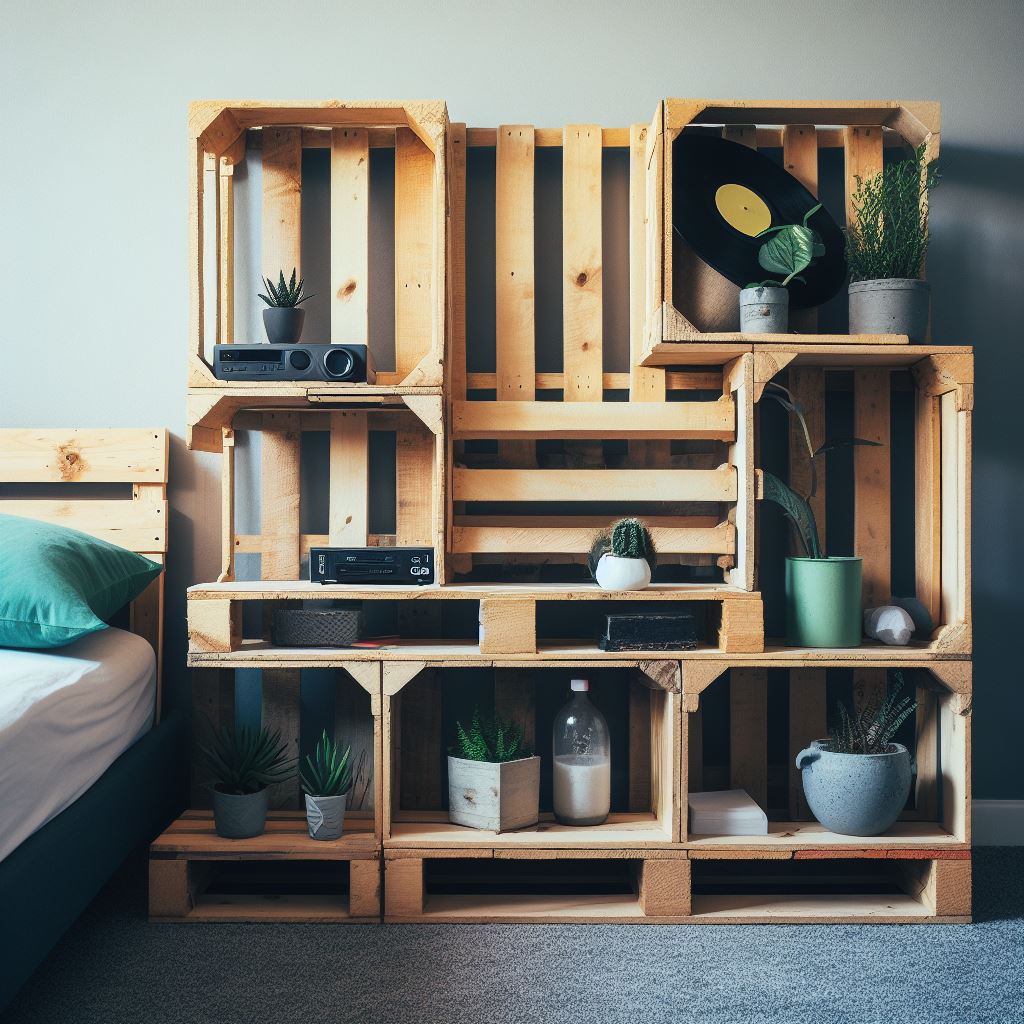
2.3 Vintage and antique pieces
Vintage and antique pieces not only add character and charm to your home but also contribute to sustainable living. By giving these items a second life, you are reducing the demand for newly manufactured products and minimizing the environmental impact of production processes. Look for vintage furniture, lighting fixtures, and accessories that resonate with your personal style and incorporate them into your decor for a timeless and eco-friendly touch.
3. Biophilic Design
Biophilic design focuses on integrating nature into the built environment to create a sense of harmony and well-being. In 2024, this design approach will continue to gain popularity as people seek to reconnect with nature and bring the outdoors inside their homes.
3.1 Indoor plants and green walls
Indoor plants not only add a pop of greenery to your space but also provide numerous health benefits, such as improving air quality and reducing stress levels. In 2024, expect to see an increase in the use of indoor plants as decorative elements, with options ranging from small potted plants to large statement pieces like fiddle leaf fig trees. Green walls, also known as vertical gardens, are another biophilic design trend that allows you to incorporate plants into your home while maximizing space.
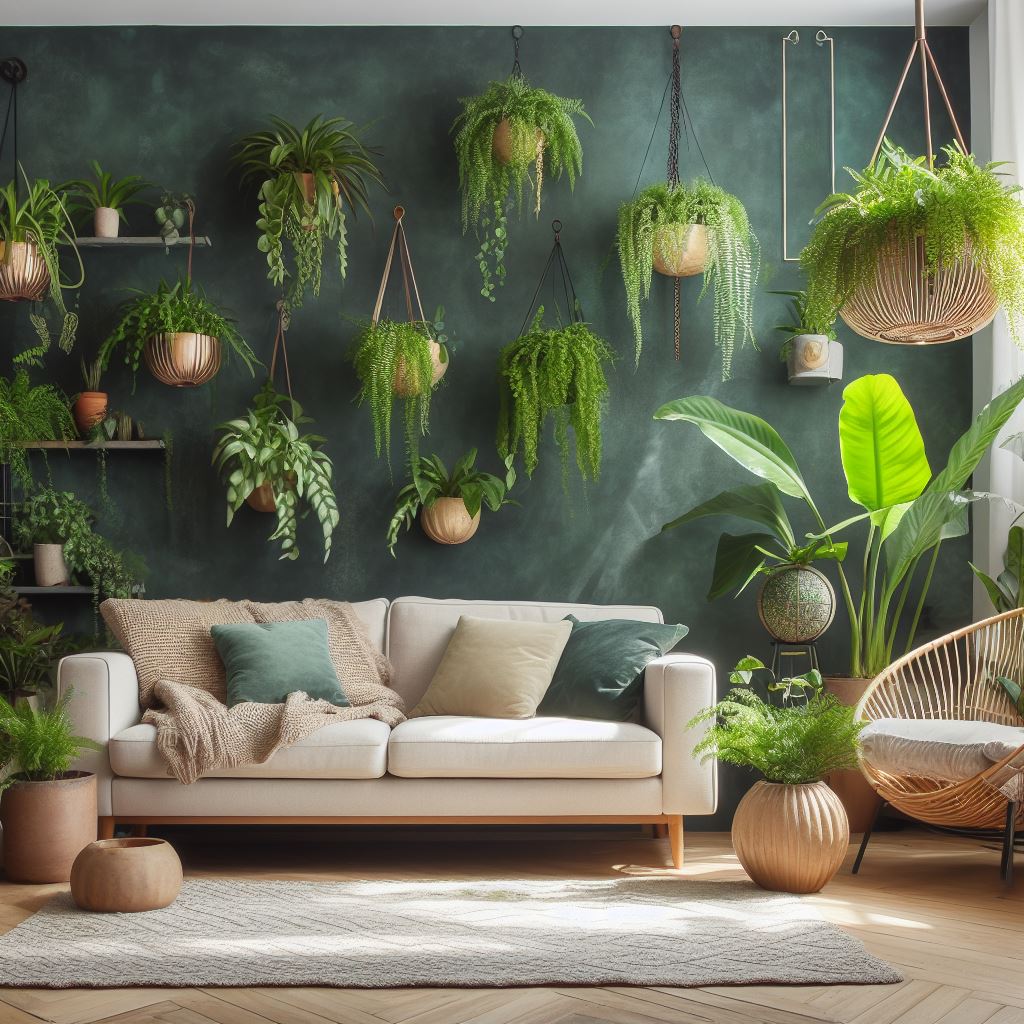
3.2 Natural lighting and ventilation
Natural lighting and ventilation are crucial elements of biophilic design. By maximizing the use of natural light through well-placed windows and skylights, you can create a bright and welcoming environment that connects you to the outdoors. Additionally, incorporating ventilation systems that allow for fresh air flow helps maintain a healthy indoor environment and reduces the need for artificial cooling and heating.
3.3 Nature-inspired motifs and patterns
Nature-inspired motifs and patterns can be incorporated into various aspects of your home decor, from wallpaper and fabrics to artwork and accessories. Look for prints and designs featuring botanical motifs, landscapes, or textures reminiscent of natural elements like wood, stone, or water. By incorporating these patterns, you can create a visually engaging and biophilic space that evokes a sense of tranquility and connection to the natural world.
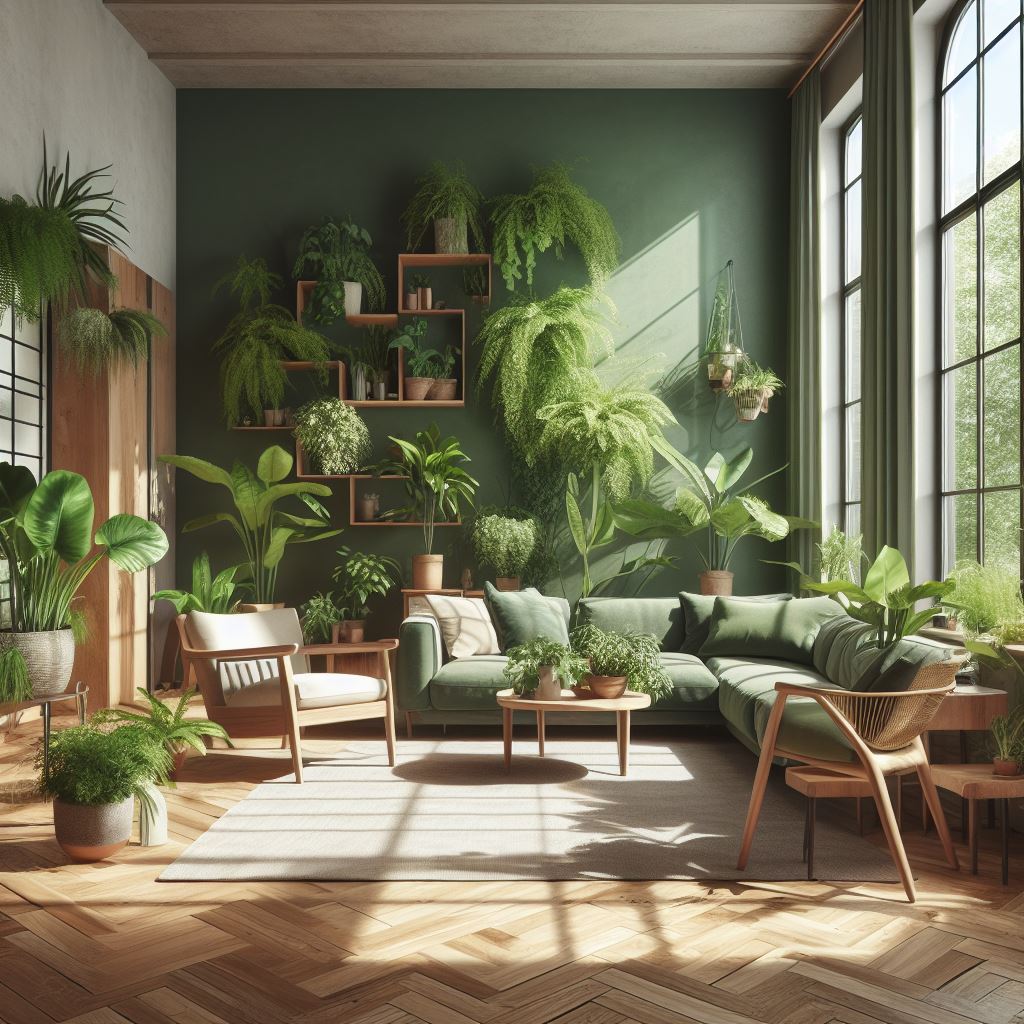
4. Minimalist Approach
In 2024, the minimalist approach to home decor continues to thrive as people embrace simplicity, decluttering, and organized living spaces. By focusing on clean lines, simple designs, and neutral color palettes, you can create a calm and serene environment that promotes relaxation and mindfulness.
4.1 Decluttering and organization
The first step in adopting a minimalist home decor style is decluttering and organizing your space. Take inventory of your belongings and let go of items that no longer serve a purpose or bring you joy. Invest in smart storage solutions that help keep clutter at bay, such as hidden storage compartments or built-in shelves. By minimizing visual distractions and organizing your space, you can create a sense of calm and clarity.
4.2 Clean lines and simple designs
Clean lines and simple designs are key characteristics of minimalist decor. When selecting furniture and accessories, opt for sleek and streamlined pieces that have a timeless appeal. Avoid excessive ornamentation or unnecessary details, and choose items that have a focus on functionality. This approach not only creates a visually pleasing aesthetic but also allows the beauty of the natural materials and textures to shine through.
4.3 Neutral color palettes
To create a sense of harmony and tranquility, choose neutral color palettes for your minimalist home decor. Shades of white, beige, gray, or muted tones provide a calming backdrop that allows other elements in the space to stand out. Introduce pops of color sparingly through accessories or artwork to add visual interest without overwhelming the overall minimalist aesthetic.
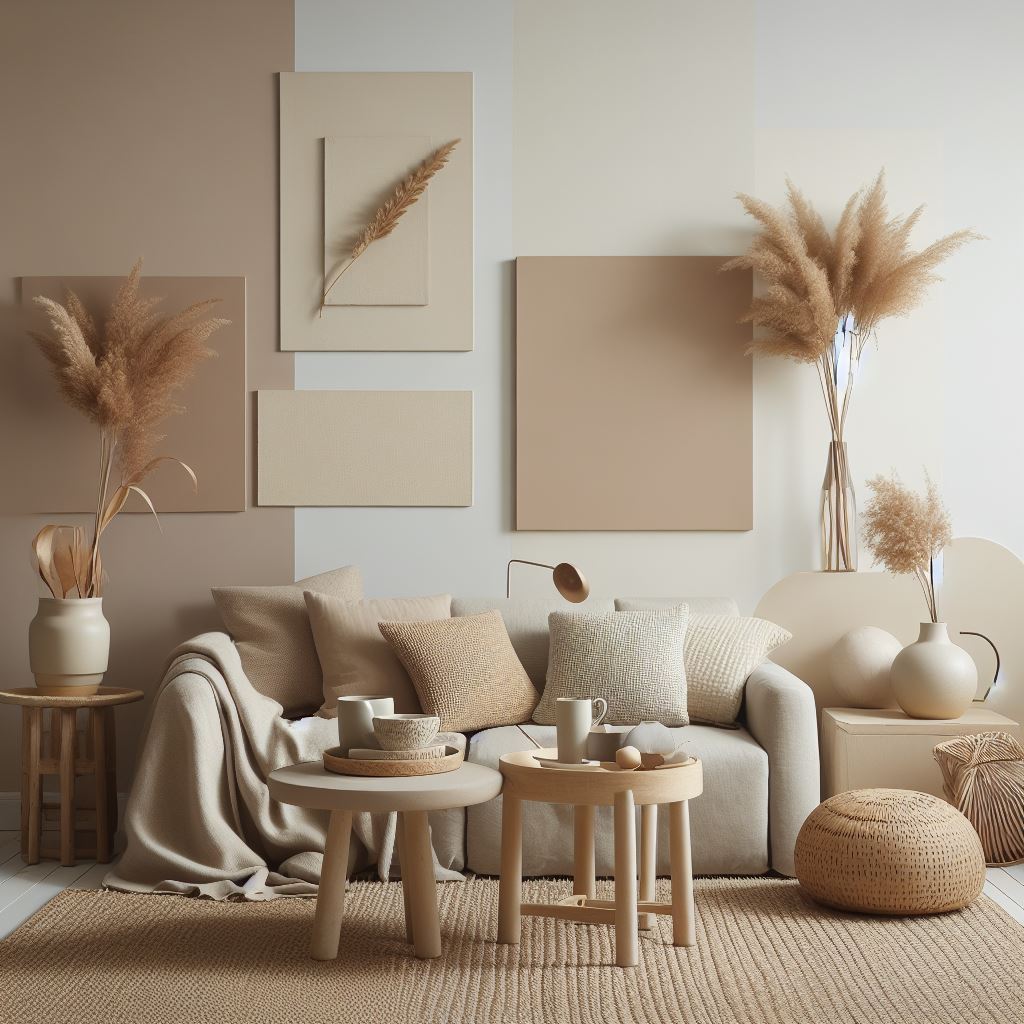
5. Sustainable Lighting Solutions
Lighting plays a crucial role in creating ambiance and functionality in your living spaces. In 2024, sustainable lighting solutions that prioritize energy efficiency and the use of natural materials will gain popularity.
5.1 Energy-efficient LED lighting
Switching to energy-efficient LED lighting is a simple and effective way to reduce your energy consumption and lower your carbon footprint. LED bulbs use significantly less energy than traditional incandescent bulbs and have a longer lifespan, making them a sustainable choice for your home. Look for LED bulbs with the ENERGY STAR certification for optimal energy efficiency.
5.2 Solar-powered outdoor lighting
For outdoor lighting, consider solar-powered options that harness the power of the sun to light up your pathways, garden, or patio. Solar-powered lights store energy during the day and automatically illuminate at night, eliminating the need for electricity and reducing your reliance on non-renewable resources. Solar lighting is not only eco-friendly but also adds a warm and inviting glow to your outdoor spaces.
5.3 Natural and sustainable materials for lampshades
When selecting lampshades, opt for those made from natural and sustainable materials such as bamboo, rattan, or organic cotton. These materials are renewable, biodegradable, and have a minimal impact on the environment compared to synthetic alternatives. Choosing lampshades that are made from natural materials not only adds a touch of eco-friendliness to your home but also brings a unique and textural element to your lighting fixtures.
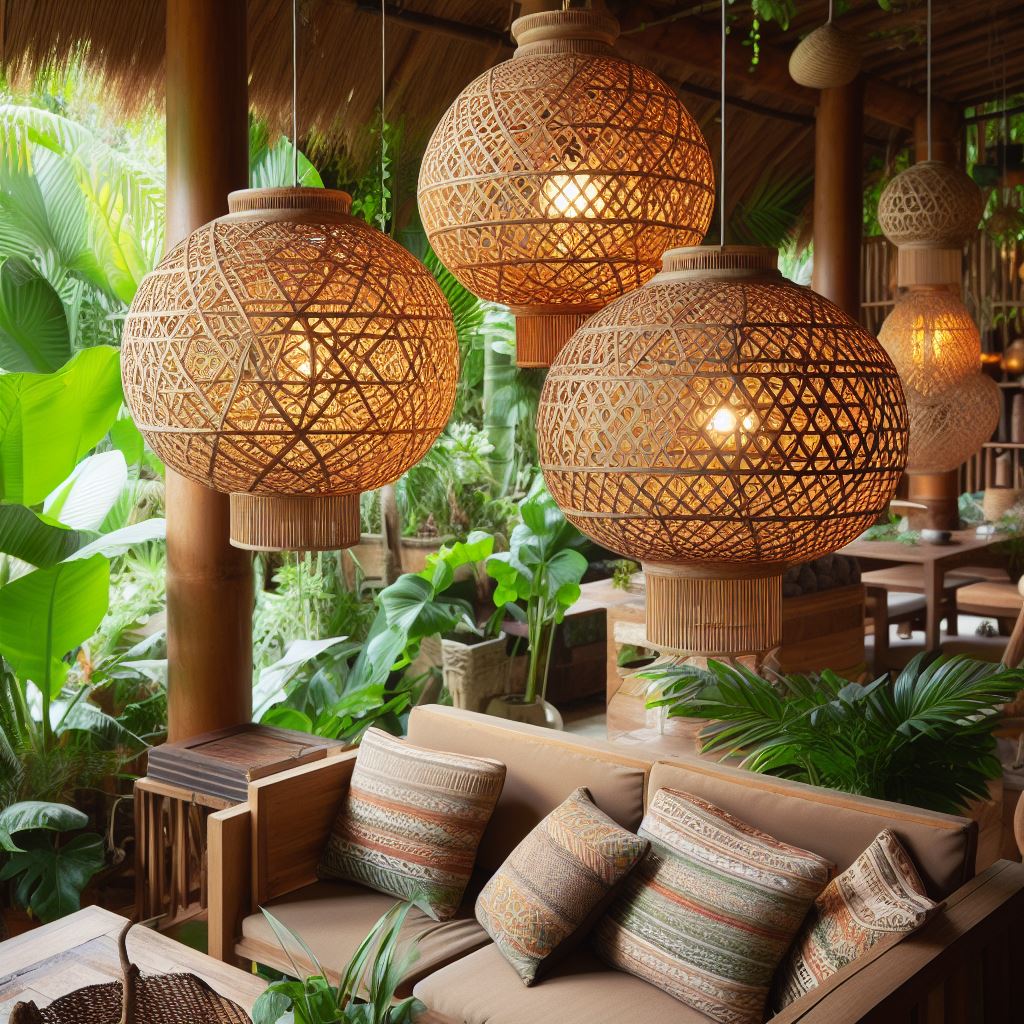
6. Smart Home Technology Integration
In 2024, smart home technology will continue to advance, providing homeowners with increased energy efficiency and convenience. By integrating energy-saving appliances, home automation systems for energy management, and smart lighting and temperature control, you can create a sustainable and comfortable living environment.
6.1 Energy-saving and smart appliances
Investing in energy-saving appliances not only reduces your carbon footprint but also saves you money on your utility bills. Look for appliances with ENERGY STAR certification, which indicates that they meet strict energy efficiency guidelines. Smart appliances, which can be controlled remotely and operated based on energy consumption patterns, further optimize energy usage in your home.
6.2 Home automation for energy management
Home automation systems allow you to manage and optimize your energy consumption by automatically adjusting lighting, temperature, and other settings based on your preferences and occupancy patterns. For example, smart thermostats can learn your temperature preferences and adjust settings accordingly, reducing energy waste. By seamlessly integrating smart home technology into your living spaces, you can achieve a more sustainable and efficient home environment.
6.3 Smart lighting and temperature control
Smart lighting systems enable you to control and automate your lighting preferences, including dimming, scheduling, and color adjustments, all through a smartphone app or voice activation. By fine-tuning your lighting settings, you can minimize energy usage and create ambiances suited to different activities or moods. Additionally, smart temperature control systems allow you to adjust and optimize your heating and cooling settings remotely, ensuring energy efficiency and comfort.
7. Eco-friendly Paint and Finishes
Choosing eco-friendly paints and finishes for your home decor not only enhances indoor air quality but also reduces the release of harmful chemicals into the environment. In 2024, expect to see a rise in the use of non-toxic and low VOC (volatile organic compounds) paints, natural and biodegradable finishes, and VOC-free wallpaper options.
7.1 Non-toxic and low VOC paints
Traditional paints contain high levels of VOCs, which can be harmful to human health and contribute to air pollution. Opting for non-toxic and low VOC paints reduces your exposure to these chemicals and creates a healthier indoor environment. Look for paints that are labeled as zero-VOC or have low VOC content to ensure that you are making an eco-friendly choice.
7.2 Natural and biodegradable finishes
Natural and biodegradable finishes are sustainable alternatives to synthetic varnishes and sealants. These finishes are often derived from plant-based oils or waxes and are free from harmful chemicals. By choosing natural and biodegradable finishes for your wooden furniture or flooring, you can protect the wood while minimizing the environmental impact.
7.3 VOC-free wallpaper options
When it comes to wall coverings, consider VOC-free wallpaper options. Traditional wallpapers can contain adhesives and coatings that release harmful chemicals into the air. Look for wallpaper made from recycled or sustainable materials and free from VOCs to ensure a healthy and environmentally friendly choice. Additionally, opting for removable or peel-and-stick wallpapers allows for easy installation and removal without damaging the walls, making them a sustainable and versatile option.
8. Upgraded Eco-Friendly Textiles
In 2024, there will be an increased emphasis on using eco-friendly textiles in home decor. From organic and sustainable upholstery to biodegradable and recycled rugs, opting for upgraded eco-friendly textiles allows you to create a comfortable and stylish living space while minimizing your environmental impact.
8.1 Organic and sustainable upholstery
When selecting upholstery for your furniture, choose fabrics made from organic and sustainable materials. Organic cotton, hemp, linen, and bamboo are great options that are grown without the use of harmful pesticides and require less water and resources to produce. Look for upholstery that is certified organic or made from recycled materials to ensure a sustainable choice for your home.
8.2 Biodegradable and recycled rugs
Rugs made from biodegradable materials such as jute, seagrass, or sisal are not only eco-friendly but also add texture and warmth to your floors. These natural fibers are renewable and have minimal impact on the environment compared to synthetic rugs. Additionally, look for rugs made from recycled materials, such as recycled plastic bottles or old textiles, to further reduce waste and contribute to a circular economy.
8.3 Eco-friendly bedding and linens
Create a sustainable and restful bedroom by opting for eco-friendly bedding and linens. Choose organic cotton or linen sheets, duvet covers, and pillowcases that are free from harmful chemicals and produced with eco-friendly practices. Look for certifications such as Global Organic Textile Standard (GOTS) or OEKO-TEX to ensure that the products meet strict environmental and social criteria.
9. Sustainable Wall Decor
The walls in your home provide a blank canvas for incorporating sustainable wall decor. In 2024, expect to see the use of reclaimed wood accent walls, recycled metal art pieces, and natural and eco-friendly wallpaper as popular choices.
9.1 Reclaimed wood accent walls
Reclaimed wood accent walls add warmth, character, and sustainability to any room. By using salvaged wood from old barns, fences, or other sources, you can create a unique focal point that tells a story while reducing the demand for new wood. Reclaimed wood accent walls can be installed in various patterns, such as horizontal planks or herringbone, to add visual interest and create a rustic yet stylish atmosphere.
9.2 Recycled metal art pieces
Incorporating recycled metal art pieces into your wall decor adds a touch of industrial chic while promoting sustainable living. Look for artwork made from reclaimed or repurposed metals such as aluminum, steel, or copper. These pieces can range from abstract sculptures to intricate wall hangings, showcasing the beauty and versatility of recycled materials while adding a bold statement to your space.

9.3 Natural and eco-friendly wallpaper
Wallpaper is an excellent way to introduce pattern, texture, and color into your home decor. In 2024, expect to see an increase in the use of natural and eco-friendly wallpaper options. Look for wallpaper made from recycled or sustainable materials, such as FSC-certified paper or natural fibers, that are free from harmful chemicals. Choose designs that incorporate nature-inspired motifs, botanical prints, or subtle textures to create a visually appealing and sustainable accent wall.
10. Sustainable Window Treatments
Window treatments not only provide privacy and light control but also contribute to the overall ambiance of a room. In 2024, sustainable window treatments that prioritize energy efficiency and the use of natural fibers and materials will gain popularity.
10.1 Energy-efficient curtains and blinds
Energy-efficient curtains and blinds can help regulate temperature, reduce drafts, and block out or filter sunlight, depending on your needs. Look for curtains and blinds made from insulating materials such as wool, bamboo, or thermal fabrics. Additionally, consider installing blackout curtains or blinds to minimize heat gain or loss, reducing your reliance on artificial heating or cooling systems.
10.2 Natural fibers and materials for window coverings
Choose window coverings made from natural fibers and materials to add a touch of sustainable elegance to your space. Fabrics such as organic cotton, linen, or hemp are great choices that are renewable and have minimal environmental impact. Bamboo shades or woven grass blinds are also sustainable options that provide texture and warmth to your windows while filtering natural light.
10.3 Smart shading solutions for temperature control
Incorporating smart shading solutions into your window treatments allows for optimal temperature control and energy efficiency. Motorized blinds or shades can be programmed to adjust based on the time of day or your desired levels of natural light and privacy. By automating your window coverings, you can maximize energy savings by reducing unnecessary cooling or heating, particularly in rooms exposed to direct sunlight.
By following these sustainable home decor trends for 2024, you can create a stylish and eco-friendly living space that not only enhances your well-being but also contributes to a healthier planet. From incorporating natural materials and upcycling to embracing biophilic design and integrating smart home technology, these trends allow you to make a positive impact while enjoying a beautiful and sustainable home. So start incorporating these ideas into your home decor and make a difference today!

